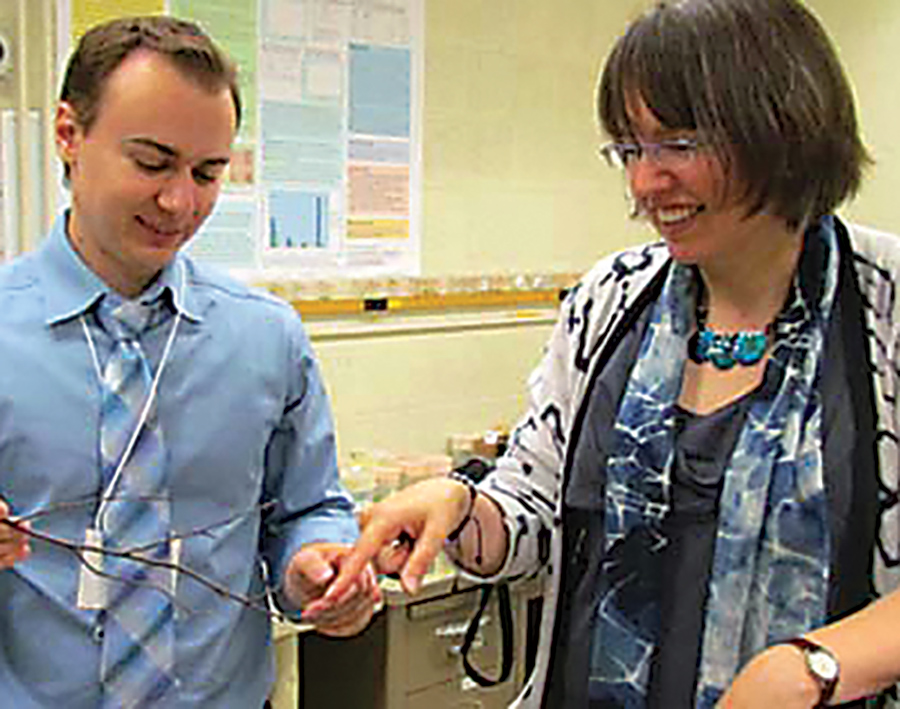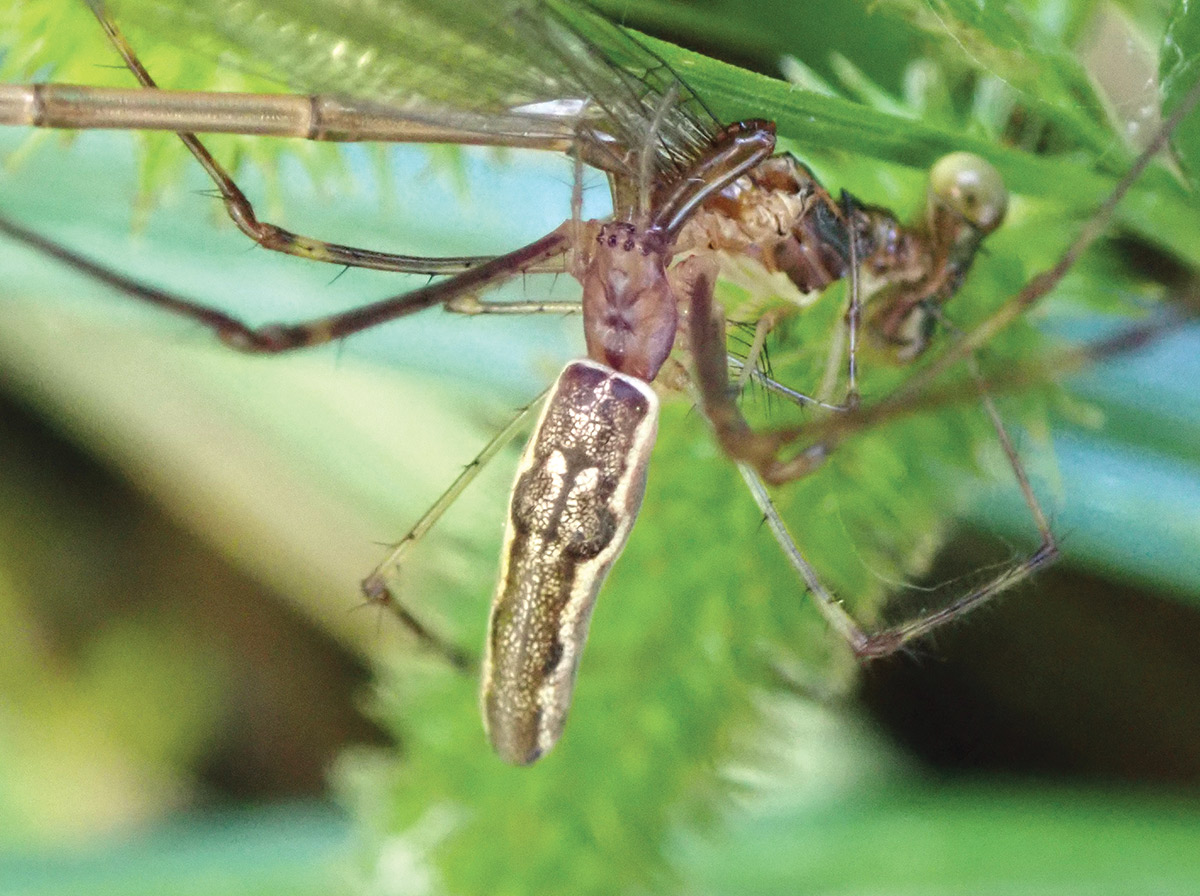Spider Senses
rowing up in Joppatown, Md., Anne Danielson-Francois ’90 led neighborhood children on backyard tours to find worms and salamanders.
When she was 10, she had a pet tarantula named Dracula. And as a teenage summer camp counselor, part of her job involved squashing spiders who snuck into tents. But more often than not, she gently wrangled them out.
Spiders scare people, says Danielson-Francois. She works to change that notion. Now an associate professor of biology at the University of Michigan-Dearborn, she makes it her mission to educate students and the public about the eight-legged creatures dwelling in dark corners of our homes — and minds.
“I think the only way you can get a love of spiders is to encounter them and see their beautiful webs and watch them eating mosquitoes,” says Danielson-Francois, whose views have appeared in USA Today, The New York Times, Parade, and CNN.
Danielson-Francois’s scientific interest in spiders began at Swarthmore. In a class taught by Professor Emeritus of Biology Tim Williams ’64, she learned about the science of animal behavior. That inspired her to design her own behavioral experiments on a tiny twig-mimicking spider, the long-jawed orb weaver (Tetragnatha elongata), along Crum Creek.

“Peter Smallwood, a Haverford professor, had just given our campus a seminar on these spiders,” says Danielson-Francois. “And I thought, ‘Yes! I want to study those!’ He was kind enough to take me into the field and teach me about these spiders. Eventually, we published a paper together on their mating behavior.”
Today her research takes her from the jungles of Taiwan to the hardwood forests of southern Louisiana and Texas. Her research focuses mainly on spider reproduction, an esoteric field which could one day deliver insights into human fertility.
“I’m really interested in how their sperm gets activated,” she says. Male spiders deliver their sperm in tiny packets like billiard balls. Females store them and do something chemically to activate them. After the sperm compete, spider moms lay fertilized eggs.
Every year, Danielson-Francois leads her students on treks along the Rouge River in Michigan to collect the same species she found at Swarthmore. Because they mate repeatedly, they are easier for studying mating behavior than other species.
None of her students have ever been bitten by a spider. It’s a myth that all spiders are dangerous, according to the Centers for Disease Control and Prevention. Only two U.S. species, the brown recluse and black widow, have venom harmful to humans, and their bites are rare. In fact, spiders benefit humans by eating ants and other pests.
“I’m thrilled my spiders are doing their work, and they do it quietly out of the way. Once you can identify different species, your fear level goes down,” says Danielson-Francois. “I spend a long time taking students from terrified, to handling spiders with ease, and they become cheerleaders for arachnids.”
Her students feed the spiders for months and clean their containers, but Danielson-Francois gets more up-close-and-personal with the tiny twig-mimickers. To identify each mating partner, she removes them from their plastic drink cup homes topped with pantyhose lids and paints their legs with fingernail polish.
“I hold them by their ‘tiptoes’ very carefully while I do this, so I don’t break their fragile legs,” she says.
As many as 300 spiders live in her lab. Her golden orb web spiders (Nephila pilipes) from Taiwan live in 5-foot-high cages. Their stiletto-like black legs span more than 3 inches, and the walls of their homes consist of wedding-veil material. The sheer fabric mimics webs and allows the spiders to use their feet and claws to move about easily.
She buys bolts of veil material from bridal stores. When clerks congratulate her on her upcoming nuptials, she gets a kick explaining the real purpose of her shopping mission. “I get a lot of weird looks,” she admits.

In the wild, females of this species outnumber males and welcome many suitors. “We’ve discovered that a male can scoop out previous male sperm and put his in,” she says. “What’s happening is sperm competition inside the female, and that’s why a female isn’t picky — she just lets the sperm from different males fight it out inside her.”
Though her husband, Serge Danielson-Francois ’91, has little interest in spiders, he has moved with her to Arizona, Kansas, Texas, and now Michigan for the love of spiders. A scholar in his own right, he has published most recently in Humanities magazine and teaches an online course on “The Messiness of Human Nature” for Humanities North Dakota. During the day, he teaches history and government at Academy of the Sacred Heart in Bloomfield Hills, Mich.
Their Matchbox couple status prevails: “It’s true love,” Danielson-Francois says. “He came out with me to my field site in Louisiana — lagoons covered in mosquitoes and filled with alligators, spiders, and venomous snakes.”